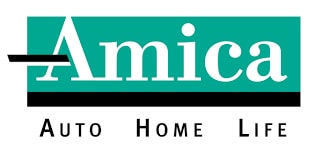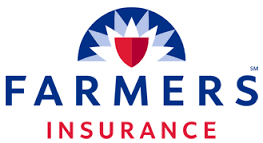Best Flood Insurance Companies
The unpredictability of flooding makes flood insurance important for both homeowners and renters. Use our guide to research the best flood insurance company for you. When choosing a flood insurance provider, consumers should learn about the company as a whole to make an informed decision. Because nearly all residential flood insurance is underwritten by the National Flood Insurance Program (NFIP) and serviced by private insurance companies, the rates and coverage are the same, regardless of which company consumers select.
- Our recommendations are based on what reviewers say.
- 4,337,775 reviews on ConsumerAffairs are verified.
- We require contact information to ensure our reviewers are real.
- We use intelligent software that helps us maintain the integrity of reviews.
- Our moderators read all reviews to verify quality and helpfulness.
Compare Reviews for Top Flood Insurance Companies | ||||||
|---|---|---|---|---|---|---|
From its beginnings in 1936, GEICO has expanded to become one of the United States’ largest insurance providers, providing several types of personal property coverage. It offers standard flood plans underwritten by the NFIP. | Chat with a ConsumerAffairs decision guide Live agent | |||||
Liberty Mutual, headquartered in Boston, has been in the insurance business since 1912. It offers a wide variety of insurance policies, including flood insurance through the NFIP. Agents can also recommend contractors for repairs. | Chat with a ConsumerAffairs decision guide Live agent | |||||
Travelers Companies Inc., founded in 1863, is one of the largest U.S. insurance companies. The company works with the National Flood Insurance Program and American Bankers Insurance Company of Florida to offer flood insurance. | Chat with a ConsumerAffairs decision guide Live agent | |||||
| Read Author Review | Allstate is a publically-traded company headquartered in Illinois. It offers a variety of personal property insurance policies, including NFIP underwritten flood insurance. Customers work with local agents to obtain policies. |  | Chat with a ConsumerAffairs decision guide Live agent | |||
| Read Author Review | Amica was established as a theft, auto and fire insurer in 1907. Today, the company offers some financial services and many types of insurance. Consumers can get NFIP flood insurance through Amica. |  | Chat with a ConsumerAffairs decision guide Live agent | |||
| Read Author Review | Assurant Flood Solutions was established in LaCrosse Mutual Aid Association in 1892 and sold disability insurance. It now provides many types of personal property insurance, including NFIP and non-NFIP flood insurance. |  | Chat with a ConsumerAffairs decision guide Live agent | |||
| Read Author Review | Established in the late-1920s, Farmers Insurance provides life insurance, auto insurance and other personal property insurance, including NFIP-backed flood insurance. Consumers can work with local agents for their policies. |  | Chat with a ConsumerAffairs decision guide Live agent | |||
| Read Author Review | MetLife is part of the Metropolitan Property Casualty Insurance Company. It offers a wide variety of insurance policies and financial products. It has both NFIP flood insurance and excess flood insurance. |  | Chat with a ConsumerAffairs decision guide Live agent | |||
| Read Author Review | The Hartford was founded in Hartford, Conn. in 1810 as a fire insurance company. It now offers several types of financial products and personal property insurance, including NFIP underwritten flood insurance. |  | Chat with a ConsumerAffairs decision guide Live agent | |||
| Read Author Review | USAA has been in business since 1922 and offers policies to United States armed service members, their spouses and children. It provides flood insurance underwritten through the NFIP program. |  | Chat with a ConsumerAffairs decision guide Live agent | |||
What flood insurance features matter most?
Facts to remember
Because flood insurance is a unique type of insurance to protect your personal property, you should keep these key facts and terms in mind when selecting a policy.
- Government underwritten: FEMA and the NFIP underwrite all standard flood insurance policies. This fact means that you will pay the same amount for flood insurance no matter which company sells and services the policy.
- Availability: You don’t have to live in a flood plain to purchase flood insurance. Those living in a low- to moderate-risk area, designated with the letter X, B or C, can purchase a Preferred Risk Policy.
- Living expenses: Standard and Preferred Risk flood insurance policies underwritten through the NFIP do not cover living expenses when you are displaced from your house. These expenses include temporary housing, food and lost income.
- Homeowners/Renters insurance: Neither homeowners nor renters insurance protects you against most types of floods. If your home suffers water damage as a result of a flood as defined by FEMA, your homeowners or renters policy will not pay for any damages.
- Replacement Cost and Actual Cash Value: The policies offered through the NFIP pay either the RCV or ACV depending on the type of item damaged. Consumers cannot pay an additional premium to upgrade to a full RCV policy.
- Contents coverage: Flood insurance policies cover structures and contents separately. If homeowners want to protect all the things inside their home, they must purchase a separate contents policy.
Customer service
Because all NFIP policies cover the same items and types of damage for the same annual rate, customer service and a company’s reputation are especially important when purchasing flood insurance.
- Local agents: If you feel most comfortable working with a local agent, find a company that has local offices. Also ask whether that agent would handle your claim or if you would deal with another company should you experience a flood.
- Telephone service: If you have a claim, you want to be able to reach someone 24/7. Ask about the claims process and when representatives are available by phone. Check to see if the company makes it easy to find customer service and claims phone numbers on their website.
- Disaster response: Some companies deploy special disaster response units to offer additional claims support and comfort to customers in major disaster areas. These companies may be more equipped to handle large-scale catastrophes.
Financial stability
Several organizations rate insurers and financial institutions for financial stability, meaning simply how well the company is doing financially. You may wish to consider these ratings when selecting an insurance to create and service your flood coverage.
- Coverage: Because the government underwrites standard flood insurance policies, you don’t need to worry that you won’t be covered if the insurance company who created and services your policy were to go out of business.
- Policy service: If the company who creates and services your policy would go out of business or have other problems, you would likely have to deal with some extra paperwork and move your policy to another company.
Related products
If you need flood insurance, you probably need homeowners, renters or condo insurance too. Buying flood insurance through the same company that provides your other policies may offer some benefits.
- Convenience: Purchasing flood insurance with your existing insurer may save you time since they will already have your information on file. It may also be easier to make a payment if they have you billing information stored in their system.
- Savings: You cannot save any money by bundling flood insurance with your existing policies. However, you may save money by bundling other policies and then use the same insurer because of convenience.
Other water damage
FEMA has a specific definition of a flood, so flood insurance will not cover events that do not meet FEMA’s definition even if those disasters cause water damage to your property. You should ask your insurance agent about whether you’re covered for these types of events. Note, the list below isn’t an extensive one.
- Plumbing backup and overflow: If a sink or tub overflows or your sewer system or sump pump backs up and causes water damage, your flood insurance will not pay for the damages. A special addition to your homeowners policy is usually required for the insurance company to pay for this damage.
- Roof leaks: If a storm damages your roof and allows water inside your home, flood insurance will not pay for the damage. Homeowners insurance may cover this.
What types of flood insurance are available?
NFIP
Flood insurance through the NFIP is available to most U.S. residents. These policies are underwritten by the federal government and exist to provide property owners and rents the option to purchase affordable flood insurance. Even though this is a government funded program, consumers purchase the insurance through private insurance companies. The rate consumers pay for NFIP insurance will not vary between insurers.
Excess
Excess flood insurance is offered to cover the difference between the value of a home and the limits on NFIP policies, which are capped at $250,000. Those whose homes are valued above $250,000 may wish to purchase, or be required by their lender to purchase, excess flood insurance. The federal government does not underwrite these policies, nor does it set the rates for them. Not all companies offer excess flood policies.
Who needs flood insurance?
Those who live in a flood plain
Anyone who owns a home in a flood plain and has a mortgage through a federally insured bank is required to purchase flood insurance. This group will need standard NFIP insurance and may also need excess coverage.
Those whose property is valued above the NFIP insurance limits
Homeowners whose houses are valued above $250,000 should investigate whether excess flood insurance is right for them.
Those who live near a flood plain
Homeowners and renters who live near a flood plain should consider purchasing a Preferred Risk Policy to protect them in the event of a severe flood that impacts usually safe areas.
Those seeking extra peace of mind
Anyone in a low- to moderate-risk area who wants extra peace of mind should purchase a Preferred Risk Policy to cover them if an unexpected flood occurs.
Those who live in an area damaged by fire
Anyone who lives in an area where a fire has destroyed much of the natural vegetation should consider purchasing flood insurance. Fire damaged areas may flood more easily because there is no vegetation to absorb rainfall and groundwater. These areas are especially at risk for flash flooding.
Renters
Individuals who rent should purchase flood insurance. They are eligible to buy NFIP standard policies or NFIP Preferred Risk Policies.
Common terms for flood insurance
When researching flood insurance, you may come across a variety of unfamiliar terms or acronyms. Understanding these terms will help you make the best choice about your flood insurance needs.
- NFIP: Congress created the National Flood Insurance Program (NFIP) in 1968 to give citizens a way to purchase affordable flood insurance. It is a division FEMA and underwrites most flood insurance policies.
- FEMA: FEMA is the Federal Emergency Management Program and became a part of Homeland Security in 2003. The agency helps communities prepare for and recover from disasters.
- Flood: FEMA officially defines a flood as an event when water covers either 2 or more acres or 2 or more properties. The water can come from the overflow of a natural body of water or from unusual runoff from storms or snowmelt. Events that cause water to flood your home but that do not fall into this definition are not covered by flood insurance.
- Flood zones: Using the tools on the National Flood Insurance Program website, you can see your area’s risk of flood. The agency denotes risk level with letters. Zones lettered A or V are high-risk areas. Zones lettered X, B or C are moderate- to low-risk areas. These zones determine whether you will be required to purchase flood insurance and will affect your rates.
- FIRM: The Flood Insurance Rate Map (FIRM) is used to determine the cost of flood insurance for any property based on geography and topography. For NFIP insurance, rates are determined by the government, not the insurance agency from which you purchase your policy. You should be charged the same amount regardless of which company you select.
- LOMR: A Letter of Map Revision (LOMR) states a change to the FIRM. These are typically issued when manmade structures are built that decrease flood risk. The changes reported in an LOMR can affect whether or not a property owner needs to purchase flood insurance and what the rate for that insurance will be.
- LOMA: A Letter of Map Amendment (LOMA) states a change to the FIRM when a property is inadvertently listed as in a flood plain when it is not. Property owners can request an LOMA through FEMA for free, but they must pay for the necessary survey and maps to be completed.
- Underwriting: In insurance terms, underwriting refers to the group or person that assesses risk, determines policy premiums and pays for the cost of covered damages. NFIB flood insurance is underwritten by the federal government.
- WYO Program: NFIP underwritten flood insurance policies are part of the Write Your Own (WYO) policy program. Private insurance companies write these policies and provide customer support related to them, but any losses related to the policy is paid by the federal government. Companies receive government money to cover the cost of creating and servicing these policies.
- ACV: The Actual Cash Value (ACV) is the amount of money it would cost to replace something minus the amount the item has depreciated since it was new. For example, a refrigerator that cost $1200 new has an ACV of approximately $900 after three years. If you have an ACV policy, insurance would only pay $900 if the appliance was damaged during a covered event.
- RCV: The Replacement Cost Value (RCV) is the amount of money it would cost to replace a covered item if it were destroyed during an event covered by insurance. To recover the difference between ACV and RCV, the insured party must typically submit receipts for the replacement item or repairs.
- Preferred Risk Policy: These policies are for people who live in areas designated as low- to moderate-risk. They are underwritten through the NFIP program. Consumers can purchase them through the same insurers that handle required flood insurance.
Thanks for subscribing.
You have successfully subscribed to our newsletter! Enjoy reading our tips and recommendations.
Information in this guide is general in nature and is intended for informational purposes only; it is not legal, health, investment or tax advice. ConsumerAffairs.com makes no representation as to the accuracy of the information provided and assumes no liability for any damages or loss arising from its use.
Want your company to be on this guide?
Yes, continueYou’re signed up
We’ll start sending you the news you need delivered straight to you. We value your privacy. Unsubscribe easily.


